
Try some of these out the next time you need to cool off.
Summer in Japan can be brutal. High temperatures combined with high humidity can make you not want to leave the confines of your air-conditioned apartment… for the next three months.
Luckily the Japanese people themselves have come up with some pretty ingenious (and sometimes hilarious) ways of staying cool in the summer. The techniques vary by region, and what may be perfectly normal in one prefecture may be off-the-wall crazy in another. The hotter a place tends to get in the summer, the crazier ideas its residents tend to use.
That’s why today we’re counting down the top five odd ways Japanese people beat the summer heat. Aside from the obvious — drinking mugicha (barley tea) and eating kakigōri (shaved ice) — what other ways might you see people in Japan avoiding the sun’s burning hugs?
So let’s get to it! Starting off with…
Honorable Mention: Covering up to the max
When I lived in Okinawa, one of the biggest culture shocks I had was seeing how much people covered up in the brutal, nearly-tropical summers. (And that’s saying something, considering some of the other culture shocks we’ve talked about before.)
I distinctly remember one time walking down the street and seeing someone walk toward me who looked like she was bundled up for a winter snowstorm. She had on a big floppy hat, sunglasses, scarf around her face, long-sleeved jacket, gloves, and long pants. It was one of the few times I felt like I might’ve been on another planet and not another country.
▼ And you better believe those gloves were
the kind that went all the way up to her shoulders.
While all this covering up may seem counterintuitive at first, it makes sense if you think about it. With such intense heat, it only takes a few minutes in the sun to get burned, and putting on sunblock can be sticky and uncomfortable, especially if you’re only going outside for a little while.
Of course this is only an honorable mention since the people covering up are only technically “staying cool” in the same way you’re technically “cooler” if you don’t have a sunburn than if you do. But add on the fact that pale white skin is seen as beautiful in Japanese society and you end up with people sometimes looking like this when they go outside in the summer:
▼ “Taking precautions against the sun
made me end up looking like a farmer.”
▼ “Going full-on sun protection this year. Last year too, I went to work like this every day. I look like an old woman or criminal, but I can deal with it.”
https://twitter.com/ayaputyo/status/863647741376839680#5. Body sheets
ハビナース さっとさわやか からだふき 60枚入 https://t.co/jngz5hNbqy pic.twitter.com/so1Hu9c95L
— 人気商品ナンバーワン!! (@ninki18) September 28, 2016
No matter how many precautions you take against the heat, eventually you’re going to sweat. And if you’re anything like me, that sweat doesn’t come in little droplets, but more like waterfalls of hot, liquid misery.
▼ Actual photo of me walking to work in the summer.
Every morning I arrived drenched after walking to work in Okinawa, and I would have to change into another set of fresh clothes. But even then, I couldn’t shake the uncomfortable hot feeling that would permeate the office all day as the sun tried to force itself through the windows and into our skin.
Thankfully one of my coworkers introduced me to “body sheets,” basically just moist wipes that you can rub on yourself when you’re feeling hot and sweaty to cool yourself down. I was skeptical at first, but pretty soon I was rubbing them on my arms, neck, face, and anywhere else I could reach, just like my coworkers.
▼ Actual photo of me using a refreshing body sheet.
While the wipes are great at cleaning sweat and giving you a brief respite, unfortunately their coolness doesn’t last very long. Just a few minutes after wiping, the heat starts to come back, and then you start craving another one. Before you know it you’ve spent all your summer salary on chasing after that sweet, sweet body sheets high.
▼ I may not have any more money…
but at least now I’ve freed up some pocket space for more body sheets!
#4. Parasols
I don’t know what it’s like in other countries, but in the U.S. I’ve never seen anyone use an umbrella aside from when it’s raining. In Japan though, sun parasols are almost as common as rain umbrellas, and on days when it’s really hot out, you can see them everywhere.
▼ No rain here, unless you count raining sunbeams of death!
日傘さしてる人多すぎて雨かと疑うレベル pic.twitter.com/yzTAhaBAZR
— ゆーちゃん@プロ🚑 (@sekaowa_yuutyan) May 20, 2017
Usually it’s only women who use sun parasols, to keep their skin from being directly hit from the sun and getting tan (it’s a lot easier than doing the full cover up we saw before). But when I lived in Okinawa, and on days when the sun was especially intense, I had no scruples about breaking out the parasol to try and get any amount of relief from the oppressive sun rays.
▼ And as this guy shows, it’s perfectly possible to look
like a badass dude while holding a parasol.
男が日傘ってそんなジロジロ見る?? pic.twitter.com/gfSCBpuvAr
— マグまぐ (@gagaga0888) April 24, 2017
#3. Ice pillows
アイスノン最高!
— 鈴木キューリ (@kyu_suzuki) July 25, 2015
部屋の温度31度でも寝られる。
カバー付きのピローよりこちらのソフトの方が効きます。
それ以前に精神的肉体的に限界で疲れ果てて起きれないだけなのかも。 pic.twitter.com/ZHbuaweEj9
Ice pillows may sound like something you’d get at a Hokkaido ice hotel, but when summer comes around in Japan, you can pick them up at must drugstores. They’re perfect for people who either don’t have air conditioning in their home, or people too cheap to turn theirs on
▼ I can do it… I can sleep without the AC.
I just need another cup of shaved ice and body wipes….
The ice pillow is basically exactly what it sounds like. It’s an ice pack that slides inside a pillow, keeping your head nice and cool as you try to get to sleep. Cold heads tend to produce more melatonin (the hormone that regulates sleep), so it might be something to try if you’re tossing and turning on those sweaty summer nights.
There are a variety of different ice pillows, but most of them follow the same pattern: an ice pack you drop into the freezer in the morning and pick up at night, and something slightly more soft and nice to insert it into to actually lay your head on.
▼ This ice pillow aficionado puts a towel around the ice pack’s soft container,
preferring a cool soothing feeling to an outright igloo.
俺の夏枕アイスノンピロー
— マッシー@ (:3_ヽ)_ (@masshi20) August 9, 2016
ソフトとハードな保冷剤で別れててゴツゴツしないし半日くらい持続する[布団]ε:) pic.twitter.com/CyZZHVYG87
#5. “Green curtains”
今日は曇ってて涼しいから、今のうちにグリーンカーテン設置!!
— ムネムネ (@20100625masa) June 18, 2017
これで毎日自宅警備してるマサムネも快適に過ごせるかな? pic.twitter.com/qzzelDAVov
In Japan, air conditioners get a pretty bad rap. Up until recently, most air conditioners used CFCs (ozone-depleting chlorofluorocarbons) as their cooling agents, though they’ve largely been replaced by HCFCs (hydrochlorofluorocarbons) which do 95 percent less damage to the ozone.
Despite that though, Japan is always looking for the most “eco-friendly” ways to stay cool in the summer, and it’s hard to be more eco-friendly than with a “green curtain” — an outside curtain made of natural plants, usually goya (“bitter melon”).
▼ Goya may be a bit of an acquired taste,
but the coolness it provides certainly isn’t!
Goya are chosen over other plants because their vines and leaves grow quickly, fairly thickly, and most importantly, naturally climb as they grow, latching on to the green-curtain lattice and staying there.
Once fully grown, a green curtain, generally grown right outside a window, blocks direct sunlight coming into the room, reducing the temperature indoors by up to 30 degrees Fahrenheit (15 degrees Celsius). And even if a green curtain doesn’t go that far, it can still reduce the temperature by a couple degrees, thus making the air conditioner work less and save energy.
▼ Ahhh, I’m feeling cooler just looking at it.
https://twitter.com/tklovesoccer/status/756762157782487040Green curtains are most popular in goya’s native Okinawa, where the summer heat is oppressive, but it’s a trend that’s started to spread to the rest of Japan too. It may seem a little strange at first, but you get to save money on energy, help the environment, and even have some fresh goya to cook when it’s grown.
▼ And you can use them to make goya chanpuru, Okinawan stir fry
made with goya, egg, SPAM… and basically anything else you want!
学食でゴーヤチャンプルーが食べれるなんて🌺🌺🌺 pic.twitter.com/bfmA10fx7f
— まんchan@湘南SHINKER/AID (@jetboy_hy29) June 21, 2017
And the #1 odd way Japanese people beat the summer heat is…
.
.
.
.
.
.
.
.
.
.
1.The Okinawa yaki-imo (baked sweet potato) truck
そういえば沖縄の最高気温は28℃ぐらいでしたが、まだ焼き芋屋さんが出てました。 pic.twitter.com/8bBS0ZWTyp
— インナービジョン(水谷) (@innavi_takmiz) April 6, 2015
The yaki-imo truck is exactly what it sounds like: a truck that slowly drives around the neighborhood selling hot baked sweet potatoes cooked right in the back, all the while blaring their hypnotic song to entice customers.
While yaki-imo trucks are a thing in the rest of Japan, they’re usually associated with fall/winter, which makes sense — a nice hot food when it’s starting to get chilly out.
But in Okinawa (the land of green curtains!), the yaki-imo trucks are at their peak during the last time of the year you’d expect: summer.
▼ Here’s a video of an Okinawan yaki-imo truck, constantly repeating its song:
“stone-baked sweet potatooooes, stone-baked sweeeeet potatoes!”
When I first encountered the hot potato truck in Okinawa, I was kind of at a loss for words. Why on Earth would someone want to buy a hot potato from a truck in the middle of the sweltering summer?!
I asked my friends in Okinawa, and they always told me the same thing: eating the potato makes them feel cooler. Some of them say the hot potato makes them sweat which cools them off, some of them say they feel cooler after they eat it (presumably because they’re not eating a hot potato anymore!), and some of them just said the sweet potato flavor cooled off their insides.
To be fair, it kind of makes sense. Even though the baked potato didn’t really work as a cooling method for me when I personally tried it, I can see how it’s a “summer” food for them. It’s kind of like how grilled hot dogs, hamburgers, and corn aren’t exactly the coolest foods in the world either, but we still associate them with summer and want to eat them then.
▼ Which helps make video titles like this make a lot more sense: “It’s summer,
so I cooked a hot potato in my yard.” You do you, buddy. You do you.
So there you have it, the top five odd way Japanese people beat the summer heat. Did we miss any of your favorite ways to stay cool in the summer in Japan? Let us know in the comments and hey, getting some cool airflow in the bathroom is yet another item to tag onto the list of the top five reasons Japanese squat toilets are awesome.
Top image: PAKUTASO (edited by SoraNews24)
W.T.F. Japan will be back next Thursday. In the meantime, say hi on Twitter and let me know if there’s any topics you’d like to see covered. See you next week!




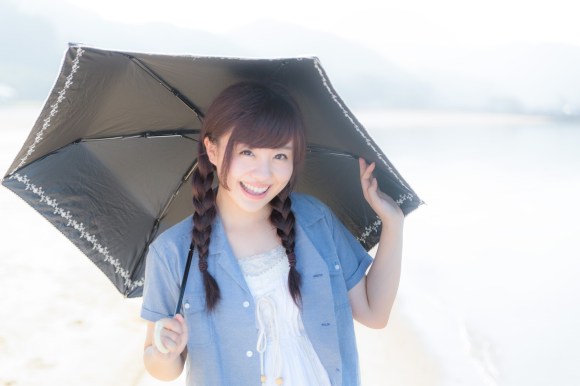
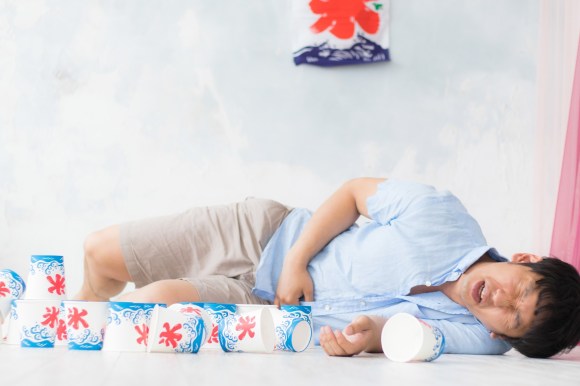
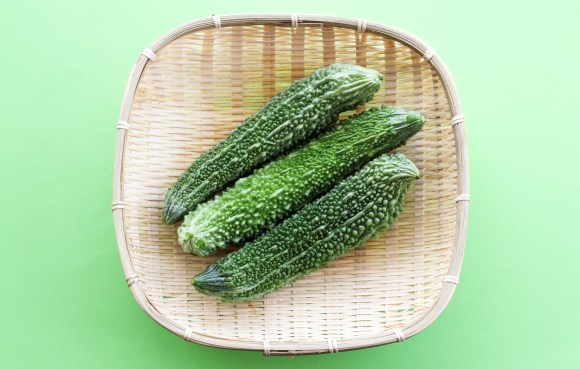
 W.T.F. Japan: Top 5 most difficult kanji ever【Weird Top Five】
W.T.F. Japan: Top 5 most difficult kanji ever【Weird Top Five】 W.T.F. Japan: Top 5 offbeat Japanese animal cafes【Weird Top Five】
W.T.F. Japan: Top 5 offbeat Japanese animal cafes【Weird Top Five】 You’re not seeing things, that’s a cat selling roasted sweet potatoes
You’re not seeing things, that’s a cat selling roasted sweet potatoes Chilling manga shows why sleeping with window open can be a dangerous way to beat summer heat
Chilling manga shows why sleeping with window open can be a dangerous way to beat summer heat It’s so hot in Japan that people are cooking food in/on their cars【Photos】
It’s so hot in Japan that people are cooking food in/on their cars【Photos】 Foreigner’s request for help in Tokyo makes us sad for the state of society
Foreigner’s request for help in Tokyo makes us sad for the state of society Seaside scenery, history, and so many desserts on Yokohama’s Akai Kutsu【Japan Loop Buses】
Seaside scenery, history, and so many desserts on Yokohama’s Akai Kutsu【Japan Loop Buses】 Japan’s summertime towelket pillowcases are even better with the addition of Ghibli stars【Photos】
Japan’s summertime towelket pillowcases are even better with the addition of Ghibli stars【Photos】 Mikado Coffee is a 76-year-old coffee chain with a major celebrity connection
Mikado Coffee is a 76-year-old coffee chain with a major celebrity connection Is the all-you-can-eat KFC buffet in Tokyo really as good as they say it is?
Is the all-you-can-eat KFC buffet in Tokyo really as good as they say it is?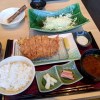 How to properly eat a traditional Japanese tonkatsu meal
How to properly eat a traditional Japanese tonkatsu meal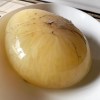 You COULD eat a terrifying octopus egg in Japan, but SHOULD you? Let’s find out!【Taste test】
You COULD eat a terrifying octopus egg in Japan, but SHOULD you? Let’s find out!【Taste test】 Japanese ramen restaurants under pressure from new yen banknotes
Japanese ramen restaurants under pressure from new yen banknotes Hey, Japanese taxi driver! Take us to your favorite restaurant in Tsuruga City!
Hey, Japanese taxi driver! Take us to your favorite restaurant in Tsuruga City! Sony Closes Plant in Gifu Prefecture, More than 1,000 Out of Work
Sony Closes Plant in Gifu Prefecture, More than 1,000 Out of Work McDonald’s new Happy Meals offer up cute and practical Sanrio lifestyle goods
McDonald’s new Happy Meals offer up cute and practical Sanrio lifestyle goods French Fries Bread in Tokyo’s Shibuya becomes a hit on social media
French Fries Bread in Tokyo’s Shibuya becomes a hit on social media Red light district sushi restaurant in Tokyo shows us just how wrong we were about it
Red light district sushi restaurant in Tokyo shows us just how wrong we were about it New private rooms on Tokaido Shinkansen change the way we travel from Tokyo to Kyoto
New private rooms on Tokaido Shinkansen change the way we travel from Tokyo to Kyoto Tokyo Tsukiji fish market site to be redeveloped with 50,000-seat stadium, hotel, shopping center
Tokyo Tsukiji fish market site to be redeveloped with 50,000-seat stadium, hotel, shopping center Japanese city loses residents’ personal data, which was on paper being transported on a windy day
Japanese city loses residents’ personal data, which was on paper being transported on a windy day Beautiful Ghibli sealing wax kits let you create accessories and elegant letter decorations【Pics】
Beautiful Ghibli sealing wax kits let you create accessories and elegant letter decorations【Pics】 Secret Kitchen bento serves Japanese flowers, birds, wind and moon in a box, but is it worth it?
Secret Kitchen bento serves Japanese flowers, birds, wind and moon in a box, but is it worth it? New definition of “Japanese whiskey” goes into effect to prevent fakes from fooling overseas buyers
New definition of “Japanese whiskey” goes into effect to prevent fakes from fooling overseas buyers Our Japanese reporter visits Costco in the U.S., finds super American and very Japanese things
Our Japanese reporter visits Costco in the U.S., finds super American and very Japanese things Studio Ghibli releases Kiki’s Delivery Service chocolate cake pouches in Japan
Studio Ghibli releases Kiki’s Delivery Service chocolate cake pouches in Japan All-you-can-drink Starbucks and amazing views part of Tokyo’s new 170 meter-high sky lounge
All-you-can-drink Starbucks and amazing views part of Tokyo’s new 170 meter-high sky lounge More foreign tourists than ever before in history visited Japan last month
More foreign tourists than ever before in history visited Japan last month New Pokémon cakes let you eat your way through Pikachu and all the Eevee evolutions
New Pokémon cakes let you eat your way through Pikachu and all the Eevee evolutions Disney princesses get official manga makeovers for Manga Princess Cafe opening in Tokyo
Disney princesses get official manga makeovers for Manga Princess Cafe opening in Tokyo Sales of Japan’s most convenient train ticket/shopping payment cards suspended indefinitely
Sales of Japan’s most convenient train ticket/shopping payment cards suspended indefinitely Sold-out Studio Ghibli desktop humidifiers are back so Totoro can help you through the dry season
Sold-out Studio Ghibli desktop humidifiers are back so Totoro can help you through the dry season Japanese government to make first change to romanization spelling rules since the 1950s
Japanese government to make first change to romanization spelling rules since the 1950s Ghibli founders Toshio Suzuki and Hayao Miyazaki contribute to Japanese whisky Totoro label design
Ghibli founders Toshio Suzuki and Hayao Miyazaki contribute to Japanese whisky Totoro label design Doraemon found buried at sea as scene from 1993 anime becomes real life【Photos】
Doraemon found buried at sea as scene from 1993 anime becomes real life【Photos】 Tokyo’s most famous Starbucks is closed
Tokyo’s most famous Starbucks is closed One Piece characters’ nationalities revealed, but fans have mixed opinions
One Piece characters’ nationalities revealed, but fans have mixed opinions We asked a Uniqlo employee what four things we should buy and their suggestions didn’t disappoint
We asked a Uniqlo employee what four things we should buy and their suggestions didn’t disappoint Japanese summer is worse than summer in Death Valley, says our correspondent, a seasoned traveler
Japanese summer is worse than summer in Death Valley, says our correspondent, a seasoned traveler Always live where the sun doesn’t shine with the ultimate in weird parasol technology
Always live where the sun doesn’t shine with the ultimate in weird parasol technology Japan has a special foil for roasting sweet potatoes at home, and it’s like having a time machine
Japan has a special foil for roasting sweet potatoes at home, and it’s like having a time machine A beginner’s summertime survival guide to Japanese air conditioners – 4 tips to fight the heat
A beginner’s summertime survival guide to Japanese air conditioners – 4 tips to fight the heat Nintendo issues warning to make sure your Switch can handle the heat this summer
Nintendo issues warning to make sure your Switch can handle the heat this summer How to stay cool in Japan this summer? With a mist-spraying Fanbrella
How to stay cool in Japan this summer? With a mist-spraying Fanbrella Here’s one of the first things you should do if you just moved into a new apartment in Japan
Here’s one of the first things you should do if you just moved into a new apartment in Japan What’s it like to pole dance on a rooftop in Tokyo?
What’s it like to pole dance on a rooftop in Tokyo? What happens when you cook beer with potato chips in a rice cooker?
What happens when you cook beer with potato chips in a rice cooker? Grilled & chilled sweet potatoes from vending machines a hit in southern Japan
Grilled & chilled sweet potatoes from vending machines a hit in southern Japan The fantastic feast of festival food in Japan
The fantastic feast of festival food in Japan How to make your own hoshi-imo Japanese dried sweet potato snacks【SoraKitchen】
How to make your own hoshi-imo Japanese dried sweet potato snacks【SoraKitchen】 Our reporter devises the best way to beat the summer heat: by eating somen in an outdoor shower
Our reporter devises the best way to beat the summer heat: by eating somen in an outdoor shower Harvest moon brings harvest sweets in Japan, here are a few you can try!
Harvest moon brings harvest sweets in Japan, here are a few you can try! Japanese banana importer teaches us how to enjoy bananas and fight heatstroke at the same time
Japanese banana importer teaches us how to enjoy bananas and fight heatstroke at the same time No electricity? No problem! Empty plastic bottles are helping to cool homes in impoverished areas
No electricity? No problem! Empty plastic bottles are helping to cool homes in impoverished areas
Leave a Reply